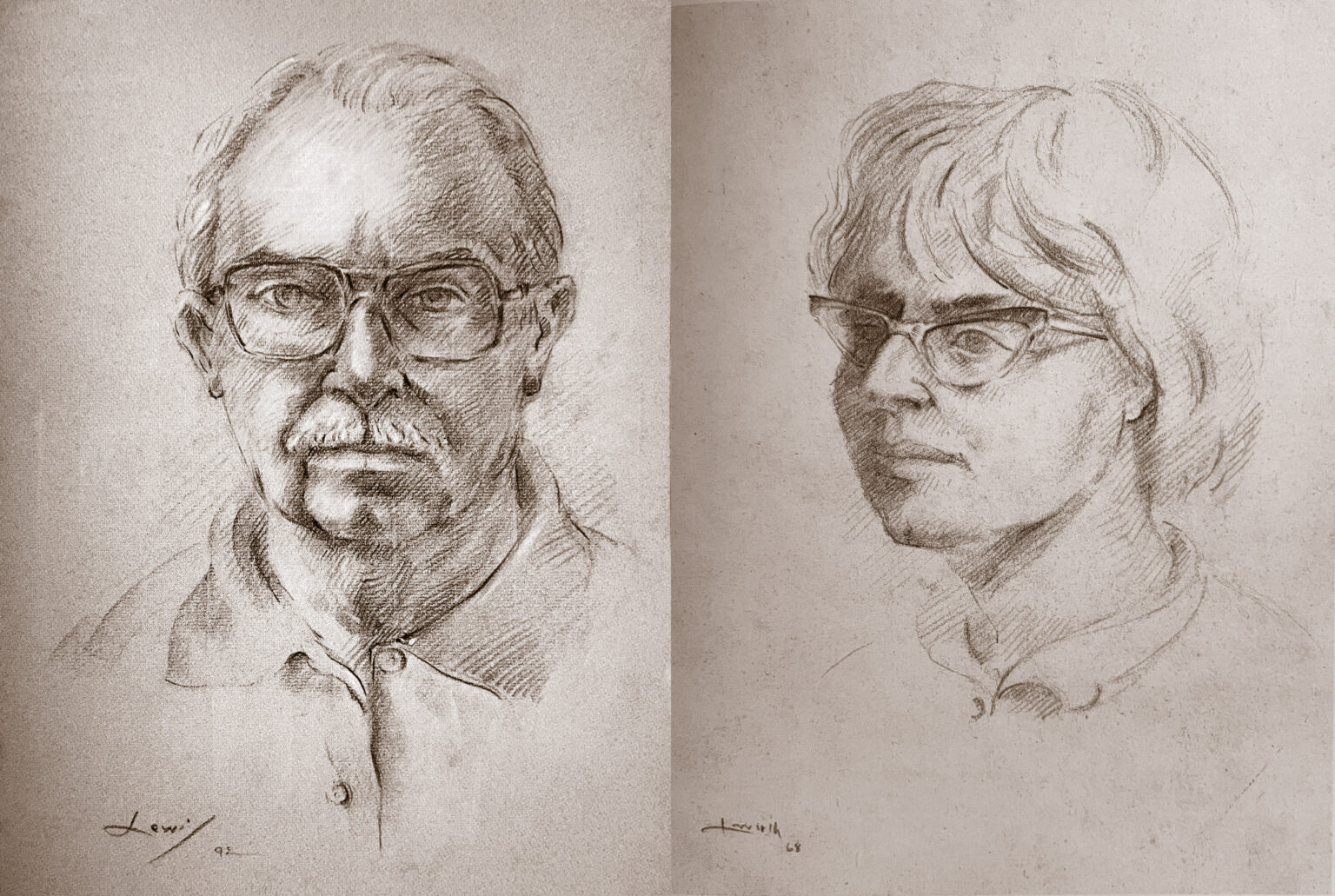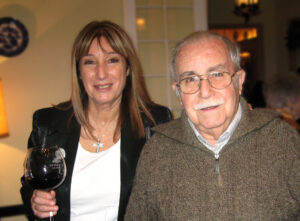
Random thoughts about my beloved granparents
These two relatives of mine have an interesting relationship with each other and, of course, with Art. In all ways and forms. Poetry, literature, stamps, cards, invitations.


Lewis Wirth (1923-2010) and Helen Cavarra (1926-1978) met and fell in love at the evening art school in Valletta. There they both performed very well and won several prizes. Their love for nature helped them develop a creative bond between them that is manifested in their prolific artistic careers.
Lewis specialized in drawing and painting the Maltese landscape and seascape, focusing on wayside chapels and the areas around St Julians’s, Balluta and St Paul’s Bary among others. He shared with Helen a love for painting flowers, but the main contribution in this area came from Helen, who dedicated her career to painting and documenting in watercolour a scientific approach to the study of Maltese flora, which remains to date one of the most complete in existence. By the time she passed away, Helen had recorded faithfully three hundred and eighty one flowers, painted in full colour and in actual size.
These two massively accomplished artists are not as well known today as the greatness of their work demands. This is for a number of reasons. The artists lived in Tripoli, Libya, between 1951 and 1969, and because of this they were not active members of the various art groups that flourished during that era of Maltese art. In the case of Helen, this was even more so at a time when women artists were marginalized and not considered major protagonists of the prevailing art movements.
And yet, Lewis Wirth, as well as his wife Helen Cavarra, were two leading protagonists and diligent art students, attending the Malta Government School of Art at the end of the Second World War and subsequent years, a time when the evening school kept its doors open at the request of the principal of the school, Chev. Edward Caruana Dingli. Both Lewis and Helen followed the school’s rigorous training programme, together with some of the major upcoming artists of the time, such as Frank Portelli, Samuel Bugeja, Antoine Camilleri, Saviour Casabene and Tony Pace, among others. Women artists there included Blanche Ellul Sullivan and Terry Asphar.
These young artists benefitted from the new approach to art teaching, introduced by Chev. Emvin Cremona, who developed a long lasting friendship with the couple.
Therefore, nobody can dismiss the names of Lewis Wirth and Helen Cavarra in the overall analysis of our modern art history. Quite the opposite. The creative partnership developed by this couple is not only important, but continues to complete a better picture of the period, particularly the years between 1945 and 1970, when Maltese art was venturing into new grounds in trying to develop new idioms of artistic expression.
The experimentation can be amply seen in Lewis Wirth’s incredibly diverse output. He worked with all media available to the arist, from oils to watercolours, from pen and ink to scratchboard, from pencil to charcoal, from ink washes to collage. Also massively diverse was his subject matter, painting scenery with the same ease as classical nudes and seascapes.
Though not as versatile as her husband, Helen was well equipped in rendering beautiful and accurately botanical drawings, becuase of her rigorous training at the Malta Government School of Art, producing plant portaits that were accurate renderings of a single typical flowering stem, showing leaves and buds centred on the vertical white paper. This does not mean she did not use other media or had no other subject matter. Her pencil portraits are excellent, for example.
An art of escape or the poetry of solitude is the impression given by the work of Lewis Wirth and Helen Cavarra. Both contributed to the cult of beauty, to a classical ideal, romantic at heart, but with a great attraction to realism and naturalism. Both artists escaped from their urban environment and from the monotony of everyday living into the countryside to be one with nature. They loved the tranquility, serenity and peace open countryside provided and they reflected about such beauty and expressed it in painting. The harmony between the duo, as they worked in tandem, was enhanced by the harmony in nature; a sunset, a sunrise, a reflection in water, clouds passing by and fine weather (never a storm). Their sole desire was to create a utopic vision of life, create a Garden of Eden, where beauty, peace and quiet stood still.
Wirth and Cavarra produced a rich and varied heritage of sketches, pencil and charcoal drawings, watercolour and oil paintings, together with collages, sketches for stamps and prints. Very impressive are graphic images in bold chiaroscuro. Focused, intelligent, passionate, enthusiastic, romantic and sentimental, they left behind them an invaluable treasure.
(this text follows writings by Joseph Paul Cassar and E.V. Borg)
To read more about these incredible artists, read the book The Life and Work of Lewis Wirth and Helen Cavarra: Their Creative Partnership by art historian Joseph Paul Cassar. You can read about and purchase the book HERE.

These two relatives of mine have an interesting relationship with each other and, of course, with Art. In all ways and forms. Poetry, literature, stamps, cards, invitations.

Lewis Wirth was born in Valletta on 4th September, 1923. During the WW2 lived for some time in Rabat. After the war settled in their summer residence in Balutta Bay,

